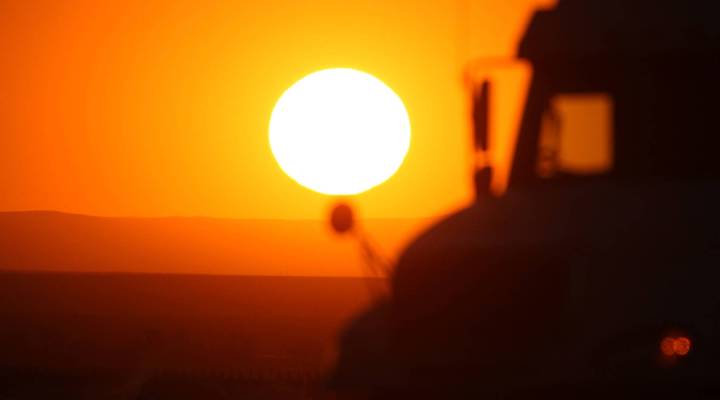
Farming in the hottest city in the country

Tess Vigeland: Kai, by the way, is on assignment in Montana, working on a Marketplace production with the PBS program Frontline. He’s in Helena, where it’s a balmy 76 degrees.
Not nearly as hot as in so many other parts of the country. Records are falling everywhere. Heat maps of the nation are bright red through the nation’s midsection and all the way to the eastern seaboard.
One of the worst spots is Hill City, Kansas, where the temperature recently hit 115 degrees — several days in a row. That is the worst kind of news for farmers in the region. Among them: Ace Billups. He’s been farming for more than 40 years. His place in Hill City has about 800 cows, plus he grows corn and wheat and other grains. They — and he — are all wilting in the weather.
Ace Billups, nice to talk you.
Ace Billups: Yeah.
Vigeland: How hot is it outside right now?
Billups: Right around 100 right now.
Vigeland: And how long has it been since it rained there?
Billups: Oh, the last real rain we had was about the 20th of April, we had about three-fourths of an inch.
Vigeland: Talk to me about what it’s like there on a daily basis, dealing with this heat and trying to save the workings of your farm.
Billups: I’d say it’s getting awful depressing. There’s virtually nothing to say, I mean, every day you get up and it looks a little bit worse out and a little worse. And then last week when the terrible heat hit, the corn and stuff was holding on — not good, but just holding on — but then it just came in and it just took the leaves and turned them like a grayish-white. In a few hours it just went from green to virtually ruining the plants. The corn — everywhere I’ve been around here anyway — the corn is virtually going to be a zero on bushels of corn.
Vigeland: What happens to your finances if you lose all that corn?
Billups: Oh, I don’t know if you know what crop insurance is; you’ve got insurance that will usually pay for your input costs and things like that, you know. You won’t make any money but you may get your original planning costs back. So you’re just virtually out a year’s worth of work.
Vigeland: Can you compare what’s happening now to previous years in your long history as a farmer?
Billups: Well, our personal farm, we’ve never had nothing that would even compare to this.
Vigeland: So what do you do, then, as the year goes on? How do you live?
Billups: Well, I don’t know. We’ll still have cattle to sell eventually, and come September, 1st of October, we’ll plant wheat and hopefully there’ll be some moisture by then to grow some wheat. If it doesn’t then, you’ll buy that crop insurance again and take whatever you get off the crop insurance to pay your people that you’ve bought the fertilizer and seeds and stuff from, you’ll get enough money to pay them back. And then just hope for another year, just hope for rain. That’s all about you can do.
Vigeland: Ace Billups is a farmer in Hill City, Kansas, and we’ve been talking about the drought conditions there. Thank you so much for joining us, and best of luck to you.
Billups: All right, thank you.
There’s a lot happening in the world. Through it all, Marketplace is here for you.
You rely on Marketplace to break down the world’s events and tell you how it affects you in a fact-based, approachable way. We rely on your financial support to keep making that possible.
Your donation today powers the independent journalism that you rely on. For just $5/month, you can help sustain Marketplace so we can keep reporting on the things that matter to you.












